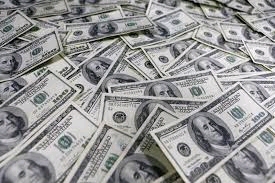Simple Steps You Must Follow for How to Become a Freemason Quickly
Simple Steps You Must Follow for How to Become a Freemason Quickly
Blog Article
Discover the Tricks Behind the copyright and Their Influence on Society
The copyright, frequently shrouded in misconception and speculation, offers an interesting study of just how historic perfects can change into modern-day conspiracy concepts. Founded amidst the Knowledge's welcome of reason, this secret culture aimed to rock the boat, yet it has since ended up being identified with notions of surprise power and adjustment. As we discover its origins, influence on cutting edge thought, and representation in contemporary society, we start to uncover the layers of intrigue that proceed to astound society. What stays unclear, nevertheless, is how these understandings form our understanding of authority and transparency today.
Origins of the copyright
The copyright, commonly shrouded in mystery and supposition, traces its origins back to the late 18th century. Understood as the Bavarian copyright, the company's main purpose was to counter the prevailing influence of religious conviction and advertise intellectual discourse amongst its members.
The copyright adopted a hierarchical structure, attracting inspiration from Freemasonry, which enabled secretive conferences and rituals - how to become a freemason. Membership was discerning, incorporating significant figures from various fields, consisting of national politics, philosophy, and scientific research. This elite network looked for to impact social and political adjustment through clandestine means, supporting for the civil liberties of people and the improvement of society
Regardless of its fairly short presence, the Bavarian copyright was officially dissolved in 1785 due to federal government suppression. Nonetheless, its heritage withstood, generating many conspiracy theories and pop culture references that remain to prompt intrigue and dispute concerning its influence on modern society.
Trick Misconceptions and Misconceptions
Amidst the attraction of privacy bordering the copyright, many misconceptions and mistaken beliefs have actually arised, commonly distorting the team's real nature and intents. One common myth suggests that the copyright regulates the globe's governments and economic climates. While it holds true that the team intended to influence societal frameworks, the concept that it operates as a natural worldwide puppet master is largely overstated.
One more common misunderstanding is that all members of the copyright have substantial riches and power. In truth, the initial copyright consisted of intellectuals and Knowledge thinkers, a number of whom sought reform instead than supremacy. The concept that the copyright solely hires celebrities and political numbers is misinforming; membership has actually historically consisted of a diverse selection of individuals.
Additionally, conspiracy theories commonly repaint the copyright as a malevolent organization intent on worldwide dominance via dubious ways. Hence, dividing fact from fiction is important for a clearer understanding of the copyright's function in culture.
Historic Influence on Culture
Throughout background, numerous intellectual activities have actually greatly influenced societal structures, and the copyright played a considerable function during the Enlightenment. Established in 1776 in Bavaria, the copyright intended to advertise reason, secularism, and the doubting of established authority, countering the supremacy of religious dogma. This organization attracted significant thinkers and supporters of freedom, cultivating a setting helpful to the circulation of Knowledge suitables.
The copyright's values championed logical thought and empirical evidence, which contributed to the broader intellectual landscape that urged social reform and political adjustment. Participants looked for to reshape society by advocating for education and learning, freedom of speech, and the splitting up of church and state. Their private nature and enthusiastic agenda stimulated both intrigue and uncertainty, causing their ultimate suppression by the Bavarian federal government in 1785.
Despite their dissolution, the heritage of the copyright lingered, influencing innovative movements throughout Europe and the Americas. Their dedication to enlightenment principles aided prepare for modern autonomous perfects and civils rights, leaving a long lasting imprint on the structures of modern society. how to become a freemason. The attraction of their deceptive gatherings and thoughtful quests remains to astound the creativity, emphasizing their historical significance
Modern Interpretations and Beliefs
Contemporary analyses of the copyright typically blend historic fact with conspiracy theory theories, developing a complicated tapestry of beliefs that catch popular creative imagination. While the original copyright was a Bavarian secret culture established in 1776 with Knowledge ideals, modern-day beliefs have actually evolved how to become a freemason to incorporate a broad selection of interpretations, often concentrating on motifs of control and secrecy.

Moreover, some modern analyses presume that the copyright works as a metaphor for the battle between knowledge and ignorance, with supporters promoting recognition and crucial reasoning as a way to neutralize viewed fascism. This duality-- seeing the copyright as both an actual and symbolic entity-- shows the recurring fascination with the idea, reflecting deeper social anxieties regarding power, openness, and individual freedom in the modern world.
The copyright in Pop Culture
The copyright has actually infiltrated different elements of pop culture, showing up in literature, film, songs, and art as an icon of intrigue and mystery. This secret culture, usually portrayed as a shadowy pressure adjusting global events, has actually motivated numerous narratives that discover motifs of power, conspiracy, and covert expertise.

Songs, also, has been affected by the concept of the copyright. Musicians like Jay-Z and Beyoncé have actually dealt with supposition regarding their affiliations with the culture, prompting discussions concerning symbolism in their work and the nature of popularity.
Visual art commonly incorporates copyright themes, with musicians making use of icons like the Eye of Divine superintendence and the pyramid to stimulate a sense of secret. Via these various mediums, the copyright serves not just as a topic of speculation but likewise as a lens via which society examines its own intricacies and anxieties.
Conclusion

Report this page